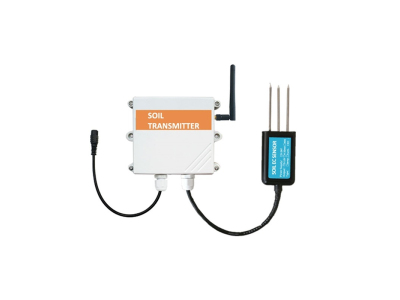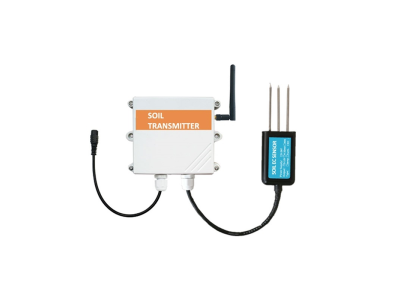Agriculture is the backbone of many economies around the world. It provides food, fiber, and fuel for the growing global population. However, the agricultural sector faces numerous challenges such as climate change, soil degradation, and water scarcity. To address these challenges, farmers are turning to precision farming techniques that rely on advanced technologies such as soil sensors to optimize agricultural practices. Soil sensors play a crucial role in precision farming by providing real-time data on soil conditions, allowing farmers to make informed decisions and maximize crop yields while minimizing inputs and environmental impact.

What are Soil Sensors?
Soil sensors are devices that are used to measure various parameters of the soil such as moisture content, temperature, pH, and nutrient levels. These sensors can be placed in the soil at different depths and locations to provide a comprehensive view of the soil conditions. The data collected by soil sensors is then transmitted to a central system where it can be analyzed and used to make informed decisions about irrigation, fertilization, and other agronomic practices.
The Role of Soil Sensors in Precision Farming
Soil sensors play a crucial role in precision farming by providing real-time data that allows farmers to make informed decisions about their agricultural practices. By monitoring soil moisture levels, for example, farmers can optimize their irrigation schedules to ensure that crops receive the right amount of water at the right time. This not only improves crop yields but also conserves water resources and reduces the risk of waterlogging and soil erosion.
Soil sensors can also be used to monitor soil temperature, which is crucial for seed germination and plant growth. By ensuring that the soil is at the optimal temperature for plant growth, farmers can improve crop establishment and early growth, leading to higher yields and better quality produce.
In addition, soil sensors can provide valuable information about soil pH and nutrient levels, allowing farmers to make informed decisions about fertilization and soil amendments. By applying fertilizers and soil amendments only where and when they are needed, farmers can reduce input costs, minimize environmental impact, and improve the overall health and productivity of their soil.
Overall, soil sensors enable farmers to practice precision farming by optimizing their agronomic practices based on real-time data, leading to higher crop yields, improved resource use efficiency, and reduced environmental impact.
Types of Soil Sensors
There are several types of soil sensors available on the market, each designed to measure specific soil parameters. Some of the most common types of soil sensors include:
Soil moisture sensors: These sensors measure the water content of the soil, allowing farmers to optimize their irrigation schedules and prevent overwatering or underwatering of crops.
Soil temperature sensors: These sensors measure the temperature of the soil, which is crucial for seed germination and plant growth. By monitoring soil temperature, farmers can ensure that crops are planted at the optimal time and that they have the best chance of success.
Soil pH sensors: These sensors measure the acidity or alkalinity of the soil, which is important for nutrient availability and plant health. By monitoring soil pH, farmers can make informed decisions about lime applications and other soil amendments.
Soil nutrient sensors: These sensors measure the levels of nutrients such as nitrogen, phosphorus, and potassium in the soil, allowing farmers to optimize their fertilization practices and improve the overall health and productivity of their soil.
The Future of Soil Sensors in Precision Farming
As technology continues to advance, soil sensors are becoming more sophisticated and affordable, making them accessible to a wider range of farmers. In the future, soil sensors are likely to become an integral part of precision farming systems, providing real-time data that can be used to optimize agricultural practices and improve crop yields.
One of the most exciting developments in soil sensor technology is the integration of soil sensors with other precision farming technologies such as GPS and remote sensing. This integration allows farmers to collect and analyze data from multiple sources, providing a comprehensive view of their fields and enabling them to make more informed decisions about their agronomic practices.
In addition, the use of soil sensors is likely to expand beyond traditional row crops to include specialty crops such as fruits, vegetables, and nuts. By providing real-time data on soil conditions, soil sensors can help farmers optimize their growing practices and improve the quality and marketability of their produce.
Conclusion
Soil sensors play a crucial role in precision farming by providing real-time data on soil conditions, allowing farmers to make informed decisions and optimize their agronomic practices. By monitoring soil moisture, temperature, pH, and nutrient levels, soil sensors enable farmers to maximize crop yields while minimizing inputs and environmental impact. As technology continues to advance, soil sensors are likely to become an integral part of precision farming systems, providing valuable data that can be used to improve agricultural practices and ensure food security for the growing global population.






